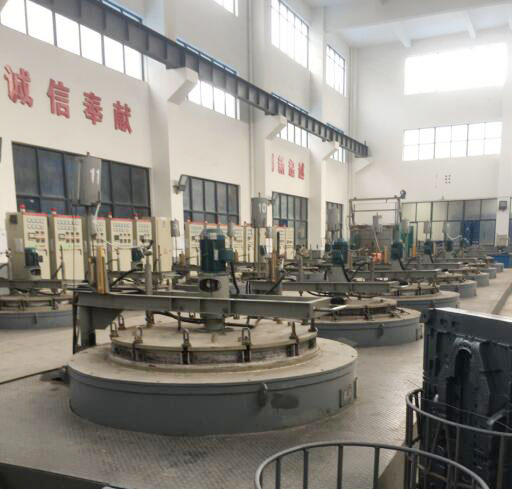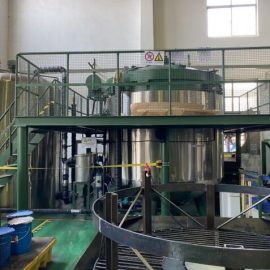Deformation Analysis Of Carburizing And Quenching
This paper discusses various factors that affect the quenching deformation in the process of carburizing and quenching. Mainly include charging method, blank quality, quenching oil selection, carburizing temperature, quenching temperature and heating rate. Through the discussion of the influencing factors, it is further explored how to reduce the quenching deformation. Finally, the specific carburizing process is given as an example.
1. Influencing factors of quenching deformation
The quenching deformation is mainly caused by the stress of the parts during the quenching process, and there are many factors that affect the deformation. It is generally believed that the accuracy of the parts decreases by two levels after heat treatment. In order to reduce the deformation, the usual idea is to reduce the temperature rise and fall speed during the heat treatment process, appropriately reduce the heat treatment temperature, etc., to reduce the thermal stress of the parts. For example, the main purpose of the preheating process is to reduce the temperature gradient during heating, so that the workpiece can be heated to the carburizing temperature relatively slowly and evenly. During carburizing and heat preservation, the temperature can be appropriately lowered (eg, 930°C to 920°C). During the quenching process, slow quenching oil, graded quenching, and lower stirring speed can be used. These all help to reduce the quenching deformation, but the quenching deformation is not limited to be improved in the heat treatment process. If the quenching deformation has certain regularity, appropriate adjustments can be made in the machining process to make up for the quenching deformation. When the dimensional accuracy of the parts is required to be high, the accuracy can also be improved by grinding the teeth. When the structure of the part is complex, it is easy to make the quenching deformation law not obvious, and it is more difficult to solve the deformation problem. According to the analysis of the influencing factors of quenching deformation, different means can be taken from different aspects to control it.
1.1 Loading way
Flat parts have poor flatness and tandem parts have poor ovality. In addition to the deformation of the parts, the material tray will also be deformed after being used for a long time, and the severely deformed material tray cannot be used continuously. In order to improve the service life of the tray, the selection of the loading amount should be appropriate, and the tray should be turned over each time it is used to change its force surface. When selecting the charging method, it should be carried out according to the technical requirements of the parts and the actual production situation.
1.2 Blank quality
The heat treatment quality and material quality of the blank are very critical to the final heat treatment quality of the part. This aspect of the problem is also the most common problem in the process of understanding during the internship of the shaft tooth center. Because no matter the machining quality, carburizing heat treatment process, etc. can be adjusted, and the quality deviation will not be too large. However, product quality problems caused by unqualified blank normalization, poor material stability and other factors are neither predictable nor remedial.
1.3 Selection of quenching oil
On the premise of ensuring the hardness of the product, the quenching oil should be selected as much as possible to help reduce the quenching deformation. This is also the reason why similar quenching oils cannot be simply replaced with each other. For the same product, using different brands or types of quenching oil may meet the requirements in terms of layer depth and hardness, but it is difficult to ensure the same quenching deformation. In this way, it is difficult to guarantee the quality stability of the mass-produced products.
1.4 Carburizing temperature
The carburizing temperature is high, on the one hand, the temperature gradient increases when the part heats up, and on the other hand, the strength decreases accordingly during the heating and heat preservation process. It not only increases the thermal stress, but also reduces the ability of the part itself to resist deformation. Therefore, although the elevated carburizing temperature helps the carburizing process, the temperature should also be controlled within a reasonable range. If it is found that the quenching deformation is large, the carburizing temperature can be appropriately reduced. Carburizing temperature adjustment range is small, generally not more than 20 ℃.
1.5 Quenching temperature
Quenching temperature refers to the temperature of the part before quenching after the carburizing and diffusion process. This temperature is generally lower than the carburizing temperature. During the quenching process, the parts are rapidly cooled from high temperature to quenching oil temperature. At this time, the control of deformation is mainly to reduce the temperature evenly during cooling to avoid excessive temperature difference between different parts of the parts.
1.6 Heating rate
The parts first enter the pre-oxidation furnace and are heated to about 400°C, and then further heated to the carburizing temperature (above 910°C). In the preoxidation furnace, the parts do not heat up with the furnace cold, but directly enter the furnace at the set temperature. Generally, the set temperature of the pre-oxidation furnace does not exceed 450 ℃, so that the heating temperature gradient is not too high before entering the pre-oxidation furnace and when the carburizing is completed after the pre-oxidation, which can ensure that it does not undergo large deformation.
2. Technical requirements for carburizing and quenching deformation
Carburizing and quenching control the quenching deformation mainly by pressure quenching. After press quenching, measure the ovality and flatness, and the unqualified parts need to be reworked and press-quenched again. However, the parts can only be reworked once, and the parts that are still unqualified are treated as scrap. Press quenching can only guarantee the ovality and flatness, and cannot correct the deformation of the tooth profile. For parts with high dimensional accuracy requirements, the accuracy can be guaranteed by grinding teeth. There should be a machining allowance of 0.10mm during gear grinding, that is, the quenching deformation should not exceed the machining allowance range.
The carburizing and quenching process of bridge gear passive gear is relatively mature, the equipment is all automatic production equipment, the process is stable after parameter setting, and the operator has little influence. Most of the unqualified quenching deformation is caused by unqualified normalizing process of tooth blank or poor material stability. The unqualified normalizing process is mainly due to the short normalizing time and insufficient microstructure transformation, resulting in poor internal uniformity of the parts, and uneven thermal stress distribution and deformation during the heat treatment process. The poor stability of the material itself will also lead to excessive deformation or irregular deformation during heat treatment. For box teeth parts, the size is small, and the corresponding deformation requirements are relatively high.

Effect of Annealing Process on Soft Magnetic Properties of FeSiBCuNb Alloys Effect 0f Annealing Temperature On Nanocrystalline Incoloy800 Equipment Composition And Details Of Large-Scale Finishing Rolling Steel Bar Heat Treatment Furnace


Contact us
Your email address will not be published. Required fields are marked *